<<
5-Waters-Volume-3-Wastewater
7 Ellesmere Sewerage Scheme
7.1 Scheme Summary
| Estimated Population Served | 4,430
|
Scheme Coverage (1 Jan 2021) | Full Charges | Serves Doyleston, Leeston and Southbridge townships which are rated.
|
System Components
| Treatment | Multistage maturation ponds |
| Disposal | Border dyke, side rollers, centre pivot, and infiltration basins, and Tramway Drain Reserve. |
| History | Original scheme installation date | 1975 |
Value ($)
| Replacement Cost | $4,309,666
Estimated replacement cost for P&E equipment, excludes all pipes. Pipes are counted within the Leeston scheme.
|
| Depreciated Replacement Cost | $2,915,216
Estimated depreciated replacement cost for P&E equipment, excludes all pipes. Pipes are counted within the Leeston scheme.
|
Financial
| Operator cost (scheduled and reactive maintenance) per connection
| $257.54/connection
|
Demand (1st Jan 2020 - 31st Dec 2020)
| Annually (m3) | 282,132
|
| Average daily (m3) | 830
|
Peak daily (m3)
| 1,692
|
| Minimum daily (m3) | 21
|
| Infiltration | Yes
|
| Sustainability | Ultimate discharge point | Irrigation to land and discharge to surface water via Tramway Reserve Drain |
7.2 Key Issues
The following key issues are associated with the Ellesmere Sewer Scheme. A list of district wide issues is located in the 5Waters Activity Management Plan: Volume 1.
Table 7‑1 Ellesmere Scheme Issues
Treatment capacity exceeded and the ability to support growth is limited
| Connect the wastewater treatment plant to Pines WWTP, or plan for upgrade program to bring plant up to capacity in line with growth predictions.
|
| Inflow and Infiltration overloads system | Investigate infiltration in contributing catchments, budget for renewals as required. |
| Sludge build-up in the oxidation pond may affect plant performance | Monitor sludge levels as part of operation and maintenance activity. |
Limited water quality data is available
| Undertake additional sampling program including at the plant inlet, outlet from maturation ponds and final effluent
|
Nitrogen loading rates to the disposal field are sometimes higher than permitted by consent interpretation
| Consider options for either upgrading treatment and disposal system or pumping treated wastewater to the Pines WWTP.
Investigate whether the interpretation of consent condition 7 can be changed, if the plant is kept in service.
|
7.3 Overview & History
The Ellesmere Wastewater Treatment Plant (WWTP) was designed to accommodate wastewater from Leeston, Doyleston, Southbridge and Dunsandel, with a long term combined population of 3,600 person equivalents. It was determined that Dunsandel will continue its existing on-site disposal freeing up the additional capacity for Leeston, Doyleston and Southbridge.
Due to increased growth in the area, an assessment of plant performance has found that the amount of wastewater that needs to be treated at the Ellesmere WWTP exceeds the design capacity of the plant by approximately 300 people. As a result the plant does not always comply with the total nitrogen (TN) discharge to land consent condition. A nutrient reduction options study was initially undertaken in 2016-2017 to identify upgrade options for the Ellesmere WWTP to address this issue. Through this study it was determined that a 100% activated sludge plant (ASP) upgrade option was preferred and a preliminary design for this option was undertaken in 2020. At around the same time a study was also completed into the alternative of pumping partially treated wastewater from the Ellesmere WWTP direct to the Pines WWTP to determine if this was viable.
In 2008 Council began seeking variation to the original plant consent conditions. The variation allows for extension of the irrigation area and additional methods of disposing wastewater onto land associated with the Ellesmere Wastewater Treatment Plant as follows:
- Extend the existing wastewater irrigation area from 15.7ha to a total of 41.9ha (currently 34.3ha) to allow the WWTP to operate within the required application of nitrogen at a rate of 200kg/ha
- Permit the use of spray irrigation with the backup facility of border dyke application over those blocks currently consented for that purpose; and
- Amalgamate the conditions of seven of the existing consents so that the total number of consents associated with the WWTP was reduced from eight to two.
Variations were granted in 2011, aggregating previous consent conditions. Expansion of the disposal area commenced in 2014.
In 2020 a review of active consents was undertaken with a recommendation made that the historical individual consents superseded by the amalgamated consent be surrendered to the Canterbury Regional Council. It was determined that interpretation of consent Condition 7 requires resolution as it is the driver for any Ellesmere WWTP upgrades.
In recent times it has become clear that the current discharge consent Condition 7 is being interpreted differently by the Regional Council than originally intended, and as a consequence the nitrogen application rate for the scheme does not always comply with this condition. A further investigation was completed to support Condition 7 interpretation. This included undertaking a nitrogen balance for the irrigation regime, determining potential nitrogen leaching to the ground water for the two options of a grazed irrigation area or a cut and carry operation. Due to the uncertainty in Condition 7 interpretation the preliminary design for upgrading the treatment plant was completed for two different effluent quality options.
In 2002 the Tramway Reserve Trust was established as a result of requests of affected parties to the Ellesmere Waste Water plant Resource consent applications. The purpose of the trust was to commit to an ongoing programme of environmental maintenance and improvement to Tramway drain as the receiving waters of the Ellesmere Waste Water treatment plant effluent disposal. A sum of $64,000 was allocated for upgrade work to be undertaken in the first two calendar years, and to follow that $10,000 was to be allocated each year from general rates for ongoing maintenance works. The Trust was established with representatives of the local community (Selwyn District), Department of Conservation (DOC), Fish and Game, and Te Taumutu Runanga.

Figure 7‑1 Scheme Schematics x3
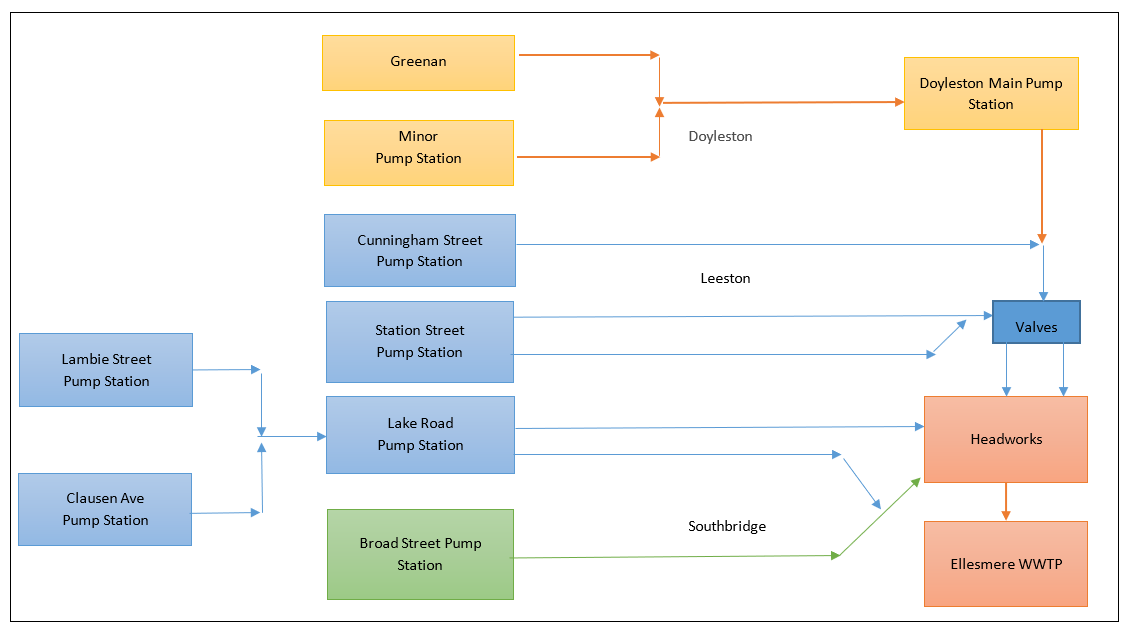
Figure 7‑2 Schematic Pump Station Connectivity
7.4 System Capacity
The fundamental requirement of the scheme is the ability to treat and safely discharge wastewater from the rapidly growing population in the Ellesmere area. The design capacity (3,600 PE) of the Ellesmere treatment plant is currently exceeded by approximately 300 people and discharge consent conditions are sometimes not met because of capacity constraints and interpretation of Condition 7. Limitations with the current plant capacity and the size of irrigation area mean options for upgrade of the scheme need to be considered.
Discharge of treated wastewater via waterways was not considered viable due the water quality requirements and the cultural sensitivity of the ultimate receiving environment (Lake Ellesmere/Te Waihora). Therefore, two solutions were considered for the future:
- Increasing capacity of the existing land disposal scheme with an upgraded treatment plant to achieve higher quality effluent including onsite storage for treated effluent and additional irrigation area
- Conveyance of partially treated wastewater (through the existing Ellesmere WWTP pond system) to the Pines WWTP.
Options to increase plant capacity as part of the Masterplan to meet future wastewater disposal needs for Ellesmere area were formally discussed with SDC throughout the preliminary design of the upgrade options and investigations of land disposal optimization as well as alternative treatment and/or disposal at the Pines WWTP .
7.4.1 Inlet
The average
flow entering
the plant in 2020 was 830m3/d, a decrease from 1,478 m3/day in 2018 - 2019.
The plant influent data provided in Table 7‑2 is for samples collected between May 2019 and October 2020.
Table 7‑2 Ellesmere WWTP Influent Data
COD (mg/L)
| 472
| 470
| 612
| 680
|
BOD5 (mg/L)
| 214
| 209
| 303
| 350
|
TSS (mg/L)
| 220
| 200
| 320
| 540
|
TKN (mg/L)
| 66
| 64
| 100
| 114
|
dTKN(mg/L)
| 56
| 53
| 84
| 96
|
NH3-N (mg/L)
| 47
| 46
| 72
| 82
|
TP (mg/L)
| 8.1
| 8.2
| 10.9
| 11.3
|
dRP (mg/L)
| 4.8
| 4.8
| 6.4
| 6.7
|
7.4.2 Final Effluent
The final effluent (Pond 8 effluent) quality data provided in Table 7‑3 is for samples collected between
27th May 2018 and 15th July 2020..
Table 7‑3 Final Effluent Quality Results for the period 27th May 2018 to 15th July 2020
| Total Suspended Solids (mg/L) | 17
| 51
| 49
| 82
| 143
|
| cBOD5 (mg/L) | 8
| 25
| 23
| 42
| 83
|
| TKN (mg/L) | 7
| 22
| 21
| 34
| 46
|
TN (mg/L)
| 16
| 26
| 25
| 39
| 47
|
Total Ammoniacal-N (mg/L)
| 0.2
| 18
| 17
| 34
| 44
|
| Total Organic Nitrogen (mg/L) | 1
| 5
| 5
| 9
| 26
|
| Nitrite + Nitrate (mg/L) | 0.5
| 4
| 2
| 12
| 21
|
7.4.3 Growth
The future development of the Ellesmere WWTP (to allow for growth) was initially established on the basis of estimated population growth in 2015/2016. The population projections were based on an initial rate of growth of 2.8% in 2017/2018 (3,723 people in 2018), slowing to 1.5% gradually each year until finally arriving at an ultimate population of the Ellesmere communities of approximately 6,631 in 2047.
The growth projections were revised in 2019 following the 3-yearly update of population figures associated with development of LTPs.
The population projections made in 2015 projected that population will reach 4,036 by 2021. The growth projections for 2021 revised in 2020 had a significant decrease in residential population of 200 people compared to the 2015 prediction, reducing the starting population projection to 3,885. The initial rate of growth in the model declined slightly to 2.7% in 2021/2022, but the ultimate rate of 1.5% remained the same and as a result the residential population of the Ellesmere communities is estimated to be approximately 6,086 by 2050 – a horizon of 3 years ahead of the previous projections.
In addition to the residential population growth, an allowance is made to account for industrial and commercial flows. Industrial and commercial growth is to be linear from 2012 until 2050.
Future Influent Flows and Loads
The Ellesmere WWTP population is forecast to increase to nearly double from 3,885 (2021) to 6,086 (2050), which will put further pressure on the plant capacity and performance and require additional capital expenditure.
Based on the predictions of growth, further capital expenditure will be required in 2021.
If an upgrade of the WWTP and maintaining disposal at the existing site is chosen, the average Total Nitrogen concentration from the WWTP will need to be reduced from the current 26 mg/L to as low as 9 mg/L to meet compliance in 2050. Capital investment in additional irrigation area and winter storage would also be needed to make the scheme sustainable. Alternatively, treated effluent can be conveyed to the Pines WWTP for disposal or further treatment, eliminating the onsite irrigation constraints at the Ellesmere WWTP.
The estimated effect of population and flow with time is presented in Figure 7‑3.
Flows are predicted on the following basis. The Base Population is 3,885 (2021) and, from the 2018-2019 data, is associated with an average dry weather flow of 1,161 m3/d. For each additional population equivalent connected, the average flow has been increased by 250 L/hd/d, which includes usage and ground driven infiltration.
It is noted in the evaluation of data that the current flows of
1,161 m3/d (January 2018 – December 2019 providing two full years) are very similar to the flow estimates of 1,195 m3/d used in the previous study, identified as
2014 data.
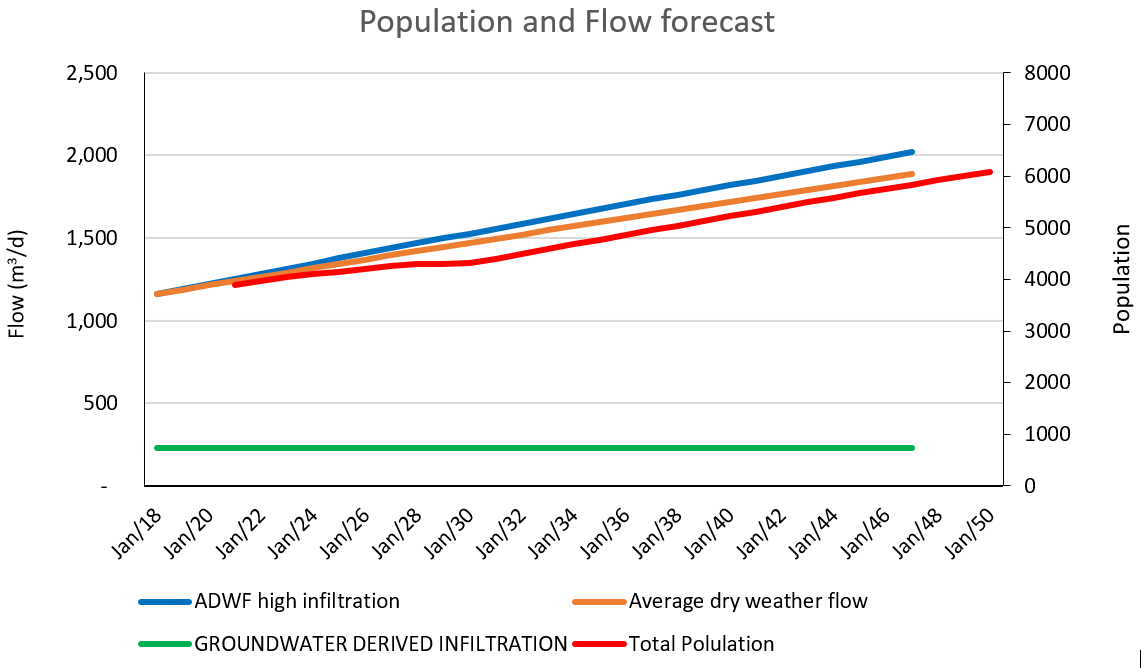
Figure 7‑3 Population and Flow Forecast
Medium/Long Term treatment Options
When considering addressing capacity issues by a change in the wastewater treatment plant, options have been reviewed for an in pond style Activated Sludge Plant (ASP) with an above ground secondary clarifier for 100% of flows, and onsite storage for the treated effluent. It is noted that the two ASP options are different in size as TN target in the effluent will depend on how discharge Condition 7 is interpreted. One ASP option is to achieve 20 mg/l TN, if Condition 7 is changed, whereas the second must achieve < 9 mg/l TN if Condition 7 remains under current interpretation.
Both ASP options include inlet screening of 9 x average flow, grit removal, in-pond bioreactor, above the ground secondary clarifier, lift pump station, chemical dosing and provisional UV disinfection of effluent on the discharge to the maturation pond. Sludge facilities are provided for sludge to be exported to the Pines WWTP for further treatment and disposal.
To inform the WWTP upgrade options study a Nitrogen balance on the irrigation aspect of the scheme was completed. The investigation found that an additional irrigation area of potentially 22 ha (in addition to currant 30 ha) and winter buffer storage of around 50,000m3 (3 months) is required using catch up irrigation rates – where irrigation is limited when there has been 5mm or more rainfall and then up to 7mm per day of irrigation once the ground conditions are again suitable. The required buffer storage can be provided by ponds 2B and ponds 3-8 after the upgrades to the WWTP are complete.
Reducing the level of nitrogen in the effluent alone would not resolve potential consent compliance issues in the future due to ongoing growth in the area. Effluent storage for winter months is required to utilise higher Nitrogen uptake rate in the plants during summer and to minimise irrigation during winter when the ground may be saturated and plants cannot take up the same amount of nitrogen.
The upgrade of the WWTP would rely on process design to achieve the required effluent quality, addition of irrigation area and management of water levels in the ponds to achieve buffer storage.
As an alternative to upgrading the WWTP (with associated increase in irrigation area and increase in storage), the option of pumping effluent that has been partially treated through the Ellesmere WWTP pond system to the Pines WWTP has been considered.
It is assumed that when using the ponds for partial treatment prior to pumping without any upgrades, the pond effluent in the short term will produce a consistent effluent quality, and total load only increases because of flow. The quality of the pond effluent can be expected to deteriorate over time as the pond retention time will decrease with increased flows due to increased population. This is not considered an issue for the pumping to the Pines WWTP option as the effluent is treated via the Pines WWTP process after pumping.
Figure 6-4 considers capacity based on the current plant configuration and ECan interpretation of the discharge consent condition. The ECan interpretation of the resource consent is that it currently allows either grazed pasture with a 200 kg N/ha/yr loading limit or a cut and carry system with the same amount of N applied having to be removed (i.e. no leaching allowed). If allowance is included for hay removal based on typical performance of 250 kg/ha/yr removed by cut and carry, a maximum Nitrogen load of 250 kg/ha/yr is permissible on the ECan interpretation of Consent Condition 7. This allows a daily average load of 20.5 kg/d over 30 ha and 35.6 kg/day over 52 ha. Council are working with ECan to clarify this interpretation and agree an approach until the scheme is upgraded to pump to the Pines.
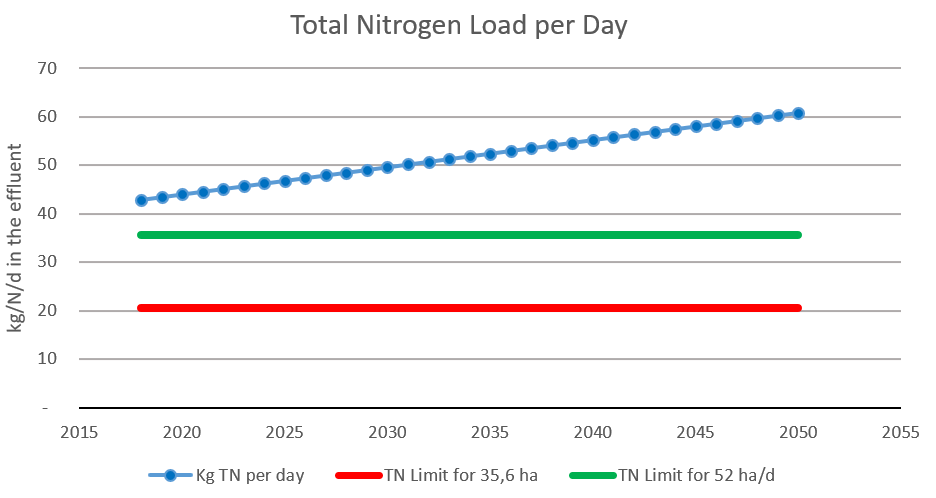
Figure 7-4 Total Nitrogen Load per Day
It is therefore recommended that either the plant upgrade or conversion to pumping to the Pines WWTP is planned for 2021/22 to enable compliance with interpretation of the existing consent conditions and to accommodate flows at the 30 year horizon (2050). Current and future flows and loads are summarised in Table 7‑4.
Table 7-4 Basis of Design for Ellesmere WWTP upgrade (incoming wastewater)
Population
| -
| 3,932
| 6,086
|
Commercial Allowance
| m3/d
| Flow 20%
Load 10%
| Flow 20%
Load 10%
|
Average daily Flow
| kg/d
| 1,478
| 2,098
|
COD
| kg/d
| 656
| 990
|
sCOD
| kg/d
| 177
| 266
|
cBOD
| kg/d
| 294
| 443
|
TSS
| kg/d
| 276
| 416
|
NH3-N
| kg/d
| 65
| 97
|
TKN
| kg/d
| 90
| 136
|
TP
| kg/d
| 11
| 17
|
Current Average daily flow is based on flow data recorded by the incoming wastewater flow meter (monitoring period 2018-2019) and future flows are based on a per capita basis of 250l/p/d and ground water infiltration allowance of 230 m3/d. The current and average loads are based on average influent concentrations (Table 7‑2) and average current and future flows accordingly.
Option Summary Costs
PricewaterhouseCoopers (PwC) was engaged to develop a financial model for a variety of wastewater options that SDC are considering (Figure 7-5). The model apportions the capital cost of the enhancements (and other associated works and upgrades), over time amongst the beneficiaries of those enhancements. This modelling considered both Option 1 (pipe to Pines) and Option 2 (upgrade Ellesmere WWTP).

Figure 7-5 Communities and projects included in the financial model
Following on from this work and in consideration of the earlier work from BECA, Council staff have summarised the cost implication of the two options (Table 7-5). Please note that in this calculation, no inflation and discounting has been applied e.g. we have assumed that both factors are the same.
Table 7-5 Financial implications of the Ellesmere WWTP options
|
Rates ($000) |
DC ($000) |
Total ($000) |
Rates ($000) |
DC ($000) |
Total ($000) |
|
Capex | 13,600 | 9,600 | 23,200 | 3,900 | 12,500 | 16,400 |
|
Opex | 9,000 | | 9,000 | 23,700 | | 23,700 |
|
Total | 22,600 | 9,600 |
32,200 | 27,600 | 12,500 |
40,100 |
The table above shows the funding required from both rates and Development Contributions (DC). Over the 30 year period, the cost of option 1 is less than option 2.
The preferred option will be consulted on as part of the 2021 LTP.
7.5 Resource Consents
The Ellesmere sewerage scheme has a number of resource consents. Table 7-6 shows the discharge permitted by the resource consents for this scheme.
Table 7‑6 Resource Consents
CRC204099
Active
| To discharge contaminants in municipal wastewater into land
| Beethams Road, Leeston
| 19/5/2020
| 28/07/2029
| 8mm/day (monthly average loading rate) 200 kg of nitrogen per hectare per year onto grazed pasture, or equivalent application and land management system.
|
CRC011679.1 Issued – Amalgamated To be surrendered in 2021
| To discharge contaminants into air from construction and operation of additional wastewater treatment and disposal facilities.
| Beethams Road And Station Street, Leeston | 20/07/2009 | 28/07/2029 | |
CRC941475.1 Issued - Amalgamated To be surrendered in 2021
| To discharge contaminants to air. | Beethams Road, Leeston | 17/07/2009 | 7/09/2029 | |
CRC011680.1 Issued - Amalgamated To be surrendered in 2021
| To discharge contaminants into land and groundwater from the operation of additional wastewater treatment and disposal. | Beethams Road And Station Street, Leeston | 20/07/2009 | 28/07/2029 | |
CRC930165.1 Issued - Amalgamated To be surrendered in 2021
| To discharge contaminants to land | Tramway Reserve Drain, Beethams Road, Leeston | 5/01/2010 | 28/07/2029 | |
CRC950253 Issued - Amalgamated To be surrendered in 2021
| To discharge oxidation pond effluent onto land via border dyke irrigation for the Leeston Sewage treatment facility, at or about map reference M36:5447-1570. | Beethams Road, Leeston | 16/02/1998 | 28/07/2029 | |
CRC941476 Issued - Amalgamated To be surrendered in 2021
| To discharge contaminants into land at or about map reference M36:544-154. | Beethams Road, Leeston | 16/09/1994 | 7/09/2029 | |
CRC011681.2 Issued - Amalgamated To be surrendered in 2021
| To discharge up to 120 litres per second of extracted groundwater into Tramway Reserve Drain. | Beethams Road And Station Street, Leeston | 20/07/2009 | 28/07/2029 | 120L/s
|
CRC011678 Issued - Active | To take groundwater | Beethams Road And Station Street, Leeston | 23/05/2002 | 28/07/2029 | 795m3/day |
The results reported in the compliance reports have not been fully compliant since the reporting period 2018/2019.
7.6 Scheme Assets
A summary of the assets within this scheme is outlined in this section.
7.6.1 Reticulation Overview
The reticulated network for each township within the Ellesmere scheme is covered under each township section.
Leeston Wastewater Scheme
Southbridge Wastewater Scheme
Doyleston Wastewater Scheme
7.6.2 Treatment and Disposal
The following details the treatment facilities within the Ellesmere Sewerage Scheme.
Table 7‑7 Treatment Facilities at Ellesmere WWP
| Screening Plant | For removal of plastics and material greater than 6mm | 2003, currently disconnected
|
| Oxidation and Maturation Ponds | Oxidation and maturation ponds in series for improved wastewater quality. With aerators and rock filters | 1975 2003 |
| Wetlands | Wetlands with alternating open water areas, planted areas and gravel beds to improve wastewater quality | 1975 2003 |
| UV Disinfection | Provision for future | -
|
| Border Dyke Land Disposal | Irrigation via 8 border dyke areas (10.6ha) with piped head races and bubble-up valves when groundwater below 0.9m. | 1975, 1985 & 2003 used until 2014
|
| Alternate Wet Weather Disposal | Land infiltration using 6 Rapid infiltration basins (RI) when local groundwater less than 0.9m from ground surface. Treated wastewater is discharged to RI basin and groundwater pumped from beneath basins and discharged to Tramway Reserve drain. | 2003 |
| Centre pivot | New centre pivot installed adding an irrigated area of 13.18ha | 2014/15 |
| Travelling irrigator | New travel irrigator adding an area of 5.7ha | 2016/17 |
The irrigation areas are summarised below.
Table 7‑8 Irrigation Areas
Area 1
| Area 2 | Area 3 | Area 4&6 | Area 5 | Area 7 | Area 8 | Area 9- travelling irrigator |
| 1.854 | 1.885 | 1.92 | 3.38 | 1.36 | 5 | 13.18 | 5.7 |
7.6.3 Design
The Wastewater Treatment Plant was designed to accommodate wastewater from Leeston, Doyleston, Southbridge and Dunsandel, with a long term combined population of 3,600 person equivalents. It has since been determined that Dunsandel will continue its existing on-site disposal freeing up the additional capacity for Leeston, Doyleston and Southbridge.
7.7 Operational Management
The wastewater schemes are operated and maintained by SICON under Contract 1241: Water Services Contract. SICON undertake investigations, conditions inspections, proactive and reactive maintenance and minor asset renewals.
Wastewater sampling is completed under an agreement with Food and Health Ltd as required.
7.8 Photos of Main Assets
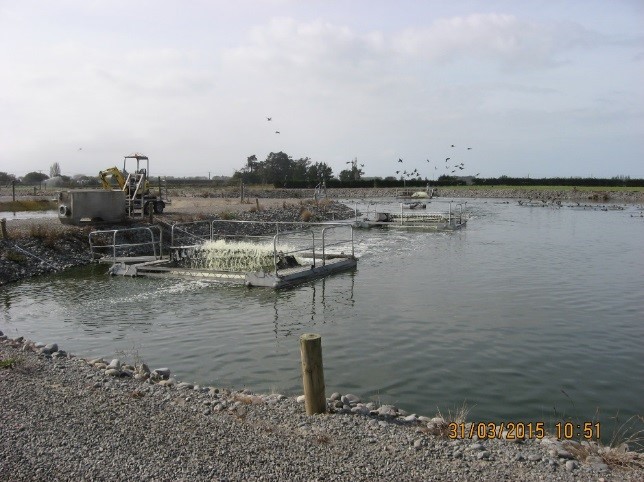
Photo 1 – Treatment Pond
| 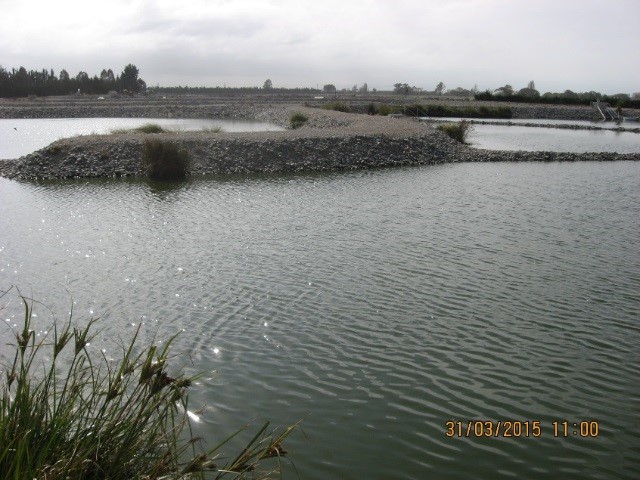
Photo 2 – Treatment Pond / Wetland
|
.jpg)
Photo 3
– Rapid infiltration basins (RI)
| 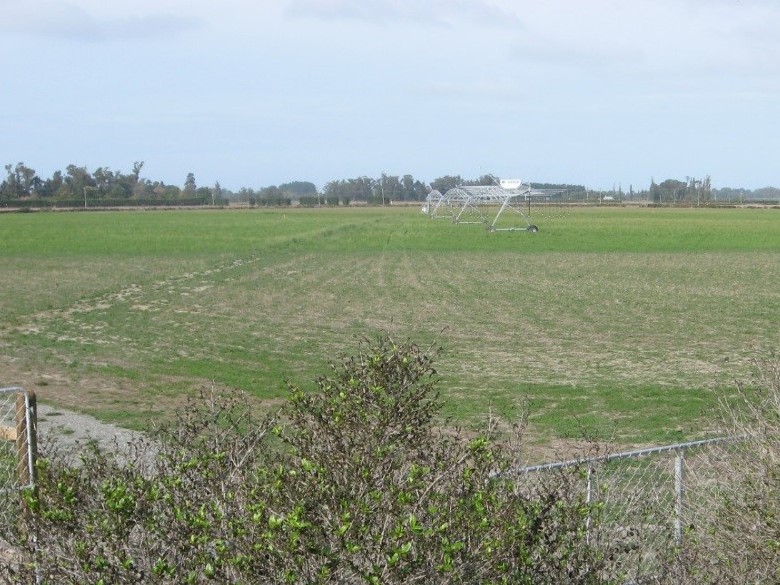
Photo 4 – New pivot
|
.jpg)
Photo 5 – Pivot Pump station and Irrigator (background)
|
7.9 Risk Assessment
A risk assessment has been undertaken for the Ellesmere Sewerage scheme. The key output from the risk assessment is the identification of any extreme and high risks which need to be mitigated. In order to mitigate these risks they have been included and budgeted for in the projects within this LTP. Table 7‑9 details the risk priority rating, Table 7‑10 outlines the risks and the list of key projects is found in Table 7‑12.
Table 7‑9 Risk Priority Rating
| > 50 | Extreme | Awareness of the event to be reported to Council. Urgent action to eliminate / mitigate / manage the risk. Document risk and action in the AMP. |
| 35-50 | Very High | Risk to be eliminated / mitigated / managed through normal business planning processes with responsibility assigned. |
| 14-35 | High | Manage risk using routine procedures. |
| 3.5-14 | Moderate | Monitor the risk. |
| < 3.5 | Low | Awareness of the event to be reported to Council. Immediate action required to eliminate / mitigate / manage the risk. Document risk and action in the AMP. |
Table 7‑10 Risks – Ellesmere Sewer Scheme
| Non-consented activities | Renewal of consents | 2014 | 27 | 27 | 6 |
| Complex network is not run with efficiency | Develop hydraulic models to optimise operation, renewals and criticality assessment | 2014 | 12 | 2.1 | 3.5 |
| Infiltration could overwhelm wastewater treatment plant | Optimise sewer renewals to maximise impact on infiltration | 2014 | 27 | 27 | 27 |
| Power failure causes treatment plant failure | Install a generator (relocate 'blue' generator) at the treatment plant and run a cable back to power the Station Street wastewater pump station. | 2014 | 12 | 2.1 | 3.5 |
Treatment Plant does not meet consent conditions
| WWTP treatment options investigation, concept design, detailed design and construction
OR consider alternative of pumping effluent to Pines WWTP
| 2014 | 20 | 20 | 20 |
The list of district wide risks can be found in 5Waters Activity Management Plan: Volume 1.
7.10 Asset Valuation Details
The total replacement value of assets within the Ellesmere Sewerage scheme is embedded within the Leeston Wastewater Scheme. We have reported on P&E assets above, although this is an approximation as this may include some wastewater pumping station assets and excludes wastewater pipes within the treatment plant.
7.11 Renewals
The renewal profile has been taken from the 2019 5 Waters Valuation. The renewal profile of the Ellesmere Sewerage scheme is embedded within the Leeston Wastewater Scheme.
7.12 Critical Assets
The identification of critical assets within the Ellesmere Sewerage scheme is embedded within the Leeston Wastewater Scheme.
7.13 Asset Condition
There is no pipe asset condition for this scheme.
7.14 Funding Program
The 10 year budgets for the Ellesmere Sewerage Scheme are shown by Table 7‑11. Budgets are split into expenditure, renewals, projects and capital projects. Expenditure and renewals have been reported on a district-wide basis in Volume 1.
All figures are ($) not adjusted for CPI “inflation". They are calculated on historical data, and population growth where relevant.
Table 7‑11 Ellesmere Sewerage Budget Summary
2021/2022
| -
|
| 2022/2023 | $876,480
|
2023/2024
| $8,330,000
|
2024/2025
| $506,480
|
2025/2026
| $2,023,320
|
2026/2027
| $639,480
|
2027/2028
| -
|
2028/2029
| -
|
2029/2030
| -
|
2030/2031
| $1,704,600
|
Total
|
$14,080,360
|
An explanation of the categories within the budgets are as follows below:
- Expenditure consists of operation and maintenance costs - this is shown on a district-wide basis in
Volume 1;
- Renewals are replacement of assets which are nearing or exceeded their useful life - this is shown on a district-wide basis in Volume 1;
- Projects are investigations, decisions and planning activities which exclude capital works; and
- Capital projects are activities involving physical works.
At this point the only major projects associated with Ellesmere Wastewater scheme in the LTP budget are for the conveyance of wastewater from Ellesmere WWTP to Pines WWTP (Table 7-12).
Table 7‑12 Key Projects
| Capital Projects | 462190012
| Conveyance and Pumping
| -
| $506,480
| -
| $4,873,880
| Growth funded
|
| Capital Projects | 462190005
| Trunk Sewer
| -
| $370,000
| $8,330,000
| -
| Growth funded
|
The list of district wide projects can be found in 5Waters Activity Management Plan: Volume 1.
Discussion on Projects
Projects have been determined based on their:
- Relevance to the scheme
- Requirement to be completed under legislation
- Ability to bring the scheme up to or maintain the Level of Service required under council's Asset Management Policy.
Many projects are
jointly funded by more than one scheme and activity. Each scheme pays a pro-rata share only, equivalent to the number of connections.
Discussion on Capital and Projects
Where relevant, Capital (Levels of Service) and Capital (Growth) projects have been included in the scheme financial details.
Levels of Service Projects and growth splits have been provided to ensure the costs of population driven works are clear.
<<
5-Waters-Volume-3-Wastewater

